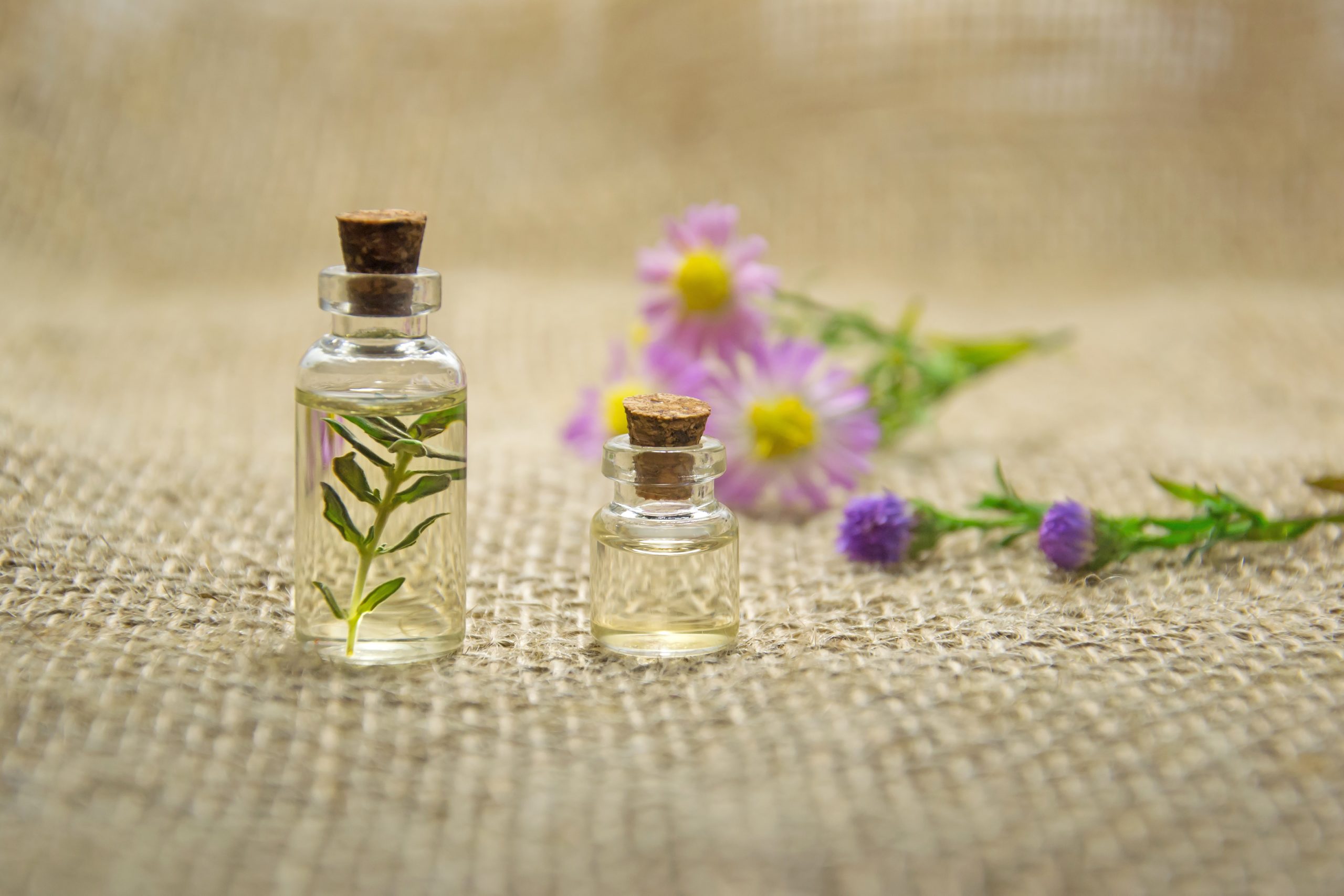
If you are new to essential oils, helping to understand the simple science behind just how essential oils work can help alleviate some of the guesswork behind one of the most popular "alternative" medicine and lifestyle practices.
Below is a quick overview of how essential oils are absorbed into the body, how it affects the chemical receptors of the brain and body and ways to use essential oils.

Common examples include
✯ applying a blend that contains black pepper (Piper nigrum) or ginger (Zingiber officinale) essential oil to reduce arthritis pain and improve flexibility
✯ applying German Chamomile (Matricaria recutita), Geranium or Melaleuca (Tea Tree Oil) essential oil to treat eczema and other skin dermatitis.
Our skin is very permeable. The active chemicals in essential oils are absorbed just like the ingredients in common pharmaceuticals such as hormone replacement therapy cream and nicotine patches, and even the water in which we bathe.
Different factors affect the absorption of essential oils through the skin.
If you massage the area first, it will increase circulation to that area, thereby causing an increase in the absorption of essential oils. Heat will likewise increase circulation and thus enhance absorption.
Some researchers report that essential oils may be more readily absorbed from skin locations with greater concentrations of sweat glands and hair follicles, such as the genitals, head, soles, palms, and armpits (Battaglia, 2003).

Essential oils enter the body is through the nose or mouth.
Spraying essential oils into the air, diffusing them with a diffuser, humidifier or lighting an essential oil candle are great examples.
Popular essential oils that are diffused into the air include the relaxing eucalyptus (Eucalyptus globules, E. radiate, or E. smithii) for respiratory complications such as a cough, inhaling peppermint (Mentha piperita) essential oil to reduce fatigue or nausea and lavender essential oil to bring about calm and relaxation.
The olfactory system includes all physical organs or cells relating to, or contributing to, the sense of smell. When we inhale through the nose, airborne molecules interact with the olfactory organs and, almost immediately, the brain.
Molecules inhaled through the nose or mouth are also carried to the lungs and interact with the respiratory system.
Thus, inhaled essential oils can affect the body through several systems and pathways.
During inhalation, odor molecules travel through the nose and affect the brain through a variety of receptor sites, one of which is the limbic system, which is commonly referred to as the "emotional brain."
The limbic system is directly connected to those parts of the brain that control heart rate, blood pressure, breathing, memory, stress levels, and hormone balance. (Higley & Higley, 1998)
This relationship helps explain why smells often trigger emotions. Knowing this, we can hypothesize how inhalation of essential oils can have some very profound physiological and psychological effects!
Helen Keller

The third way that essential oils enter the body is by ingestion (swallowing).
Know your sources and company reputation.
Consult a healthcare professional knowledgeable in essential oils and homeopathy when considering taking essential oils internally.
The ingestion of essential oils is not common practice in the US. But in eastern Asia, India and in France, it is more common, but only when specially trained physicians, pharmacists and shamans prescribe and dispense them.
⚠ Some essential oils can be toxic to the liver or kidneys when ingested.
⚠ Chemical breakdown of essential oils during gastric processing can change the effects.
⚠ There could be potential drug interactions. ,sup>(Tisserand and Balacs, 1995; Schnaubelt, 1999)
Source: takingcharge.csh.umn.edu
